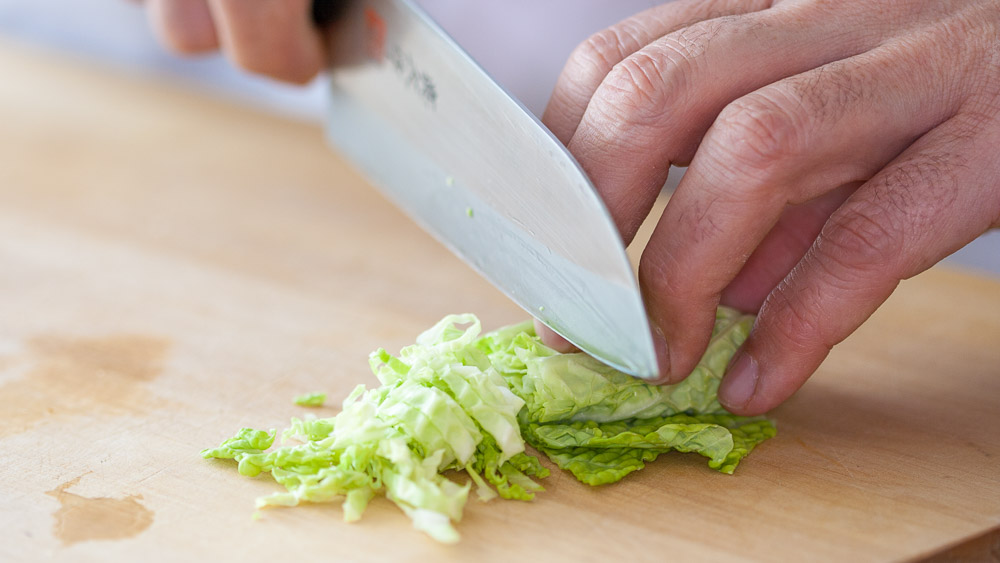Cooking isn’t just a chore; it’s a blend of art and science. To achieve culinary excellence and efficiency in the kitchen, you must master the essential skill of cutting with a knife appropriately. Not only does this ensure your safety, but it also enhances the taste and presentation of your food. With our guide, you’ll learn how to cut with a knife properly, adopting techniques approved by seasoned chefs. We bring to you a tremendous insight on mastering the use of knives.

1. Importance of Cutting Food Properly
Learning the proper cutting techniques is essential for both safety and culinary perfection. Precision in cutting affects cooking times, texture, and even flavor absorption. Understanding how to cut with a knife properly will turn your cooking experience into a delightful journey.
2. Key Factors in Choosing the Right Knife
A great knife is your best friend in the kitchen. Choose knives based on what you’re slicing. From chef’s knives to paring knives, having the right tool enhances your efficiency and precision.
2.1 Types of Kitchen Knives
Familiarize yourself with different types of knives, their uses, and why it’s important to have a variety to handle all your cutting tasks.
2.2 Choosing Quality Knives
A quality knife has balance, durability, and sharpness. Always test a knife before buying it to see if it fits your hand naturally.
3. Holding the Knife Correctly
Hold the knife like you mean it! Having a proper grip maximizes control and minimizes slips, ensuring you’re cutting with confidence.
3.1 The Pinch Grip Technique
The pinch grip gives supreme control. This technique involves pinching the blade where it meets the handle.
4. Cutting Techniques to Master
Cutting isn’t just about chopping; its about finesse. Learn techniques like slicing, dicing, mincing, and julienning to elevate your dishes.
4.1 Basic Cuts for Beginners
Start with the essentials. Basic techniques give you confidence to handle more complex cutting tasks in the future.
4.2 Advanced Cutting Techniques
Once comfortable with basics, explore more advanced techniques such as brunoise, chiffonade, and batonnet for a refined touch.
5. Knife Safety in the Kitchen
Always prioritize safety to make cutting as harmless as possible. Keep the cutting area tidy and always cut away from your body.
5.1 Maintaining Focus
Keep distractions at bay and always focus on your task at hand. Even experienced chefs can make mistakes when distracted.
5.2 Using Cutting Boards
Always cut on a stable, non-slip cutting board. Your surface matters just as much as your technique.
6. Keeping Knives Sharp
A dull knife is more dangerous than a sharp one. Learn essential sharpening techniques to keep your knives in tip-top shape.
6.1 Sharpening Tools and Techniques
Whetstones, honing rods, and electric sharpeners ensure your knives remain as sharp as when they were new.
7. Practice Makes Perfect
No one becomes a master overnight. Keep practicing your techniques and continually refine them for excellence.

FAQs
Q1. Whats the best way to practice cutting?
Practice by cutting a variety of fruits and vegetables. Start with firm produce like onions and carrots, then move to softer items like tomatoes, ensuring you test different techniques.
Q2. How can I ensure my knives stay sharp?
Regular maintenance is key. Use a honing rod frequently and sharpen knives using a whetstone or other sharpeners as needed.
Q3. What’s the biggest cutting mistake beginners make?
The most common mistake is using the wrong knife for the task, leading to awkward angles and safety hazards. Always match the knife to the job.
With dedication and practice, anyone can learn how to cut with a knife properly. For more insights into making cutting an art, visit Fruit Cutting Guide and boost your kitchen efficiency.
For further cutting techniques, read about cutting French fries, waffle fries, and mangoes.
This article contains affiliate links. We may earn a commission at no extra cost to you.


